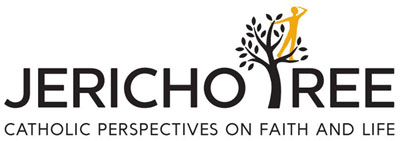A Guide to the Family Synod, Part II: ‘contemporary challenges’

[The second in a series by Elizabeth Howard considering the questions that have been put to the world’s bishops’ conferences in the run-up to the Synod of Bishops in October]
After the ‘Introduction’ (discussed in my previous post), the Relatio Synodi’s first section is “Listening”. Here (paragraph 5, wrongly numbered 4 in the English translation) the document outlines the changing situation of the family in the modern world.
It recognises some positive changes, such as “greater freedom of expression and a better recognition of the rights of women and children” but many challenges, including a “troubling individualism” and a “crisis of faith”. Many people experience loneliness (paragraph 6) or a feeling of powerlessness and are so burdened by unemployment and poverty that they are hesitant about starting a family and reluctant to look after the elderly. The duty towards elderly relatives has been recently emphatically highlighted by Pope Francis.
Different cultures manifest different challenges to the family (paragraph 7): polygamy, arranged marriages, and cohabitation are in conflict with different aspects of Church teaching. Mixed marriages can present difficulties but can also foster a spirit of ecumenism and religious dialogue.
Many children are born to unmarried parents (paragraph 8) and subsequently grow up with just one biological parent in a blended family. Fathers need to take more responsibility for their children. In a recent audience, Pope Francis took this idea further, arguing that workaholic fathers effectively make their children orphans. This paragraph also addresses the position of women. “The dignity of women still needs to be defended and promoted. In fact, in many places today, simply being a woman is a source of discrimination and the gift of motherhood is often penalized rather than esteemed”, the document notes, adding that violence towards and exploitation of women and children is a blight on society. Finally, migration is a problem undermining family life for many.
As a donor-conceived adult, I would have loved to have seen some mention of donor conception in this section. I agree wholeheartedly with the Church’s teaching on donor conception (in short – don’t do it: see Catechism of the Catholic Church paragraph 2376) but donor-conceived people exist and it would be very heartening for us to have some explicit words of welcome from the Church. (When I was considering becoming Catholic, I attended classes run by a Dominican friar. During the session on ensoulment I worried briefly that I might not have a soul because of the way I was conceived. I’ve straightened out that misunderstanding now, but it would still be very meaningful for the Church to spell out that donor-conceived people are no less human than anyone else.) There is a very good article on the dignity of donor-conceived people here.
The next sub-section, “The importance of affectivity in life” seems to suffer a little from being rather hurriedly translated from a typically abstract and complex Italian passage. What it seems to be saying is that, while it is good that people are taking more account of their feelings, it is important that these feelings do not turn inward so that individuals become overly preoccupied with themselves and their own needs and desires. The document states that marriage is a strong antidote to such a tendency. In this context, the growth of pornography and its ubiquity thanks to the internet is a major challenge for many people. Many couples fail to mature in their relationship and the resulting crisis in their marriage can lead to divorce and family breakdown with catastrophic consequences for the individuals concerned and for society as a whole. The falling birthrate in many countries is also a pressing concern: this was alluded to by Pope Francis in his comments after his trip to the Phillipines, the nuance of which was lost in the coverage of his “rabbits” reference (see CV Comment here).
The section ends by offering hope: despite the many challenges faced by families, the Church has a wonderful message for the people of the world: we are all made by God in His image and this truth can have a profound effect on us and on our relationships. The Church needs to come alongside people in their concrete situations, offering them Christ’s “dynamic of truth and mercy”.
The Lineamenta — which have been sent to the world’s bishops’ conferences in advance of October’s synod — asks these questions relating to this section:
- What initiatives are taking place and what are those planned in relation to the challenges these cultural changes pose to the family (cf. ns. 6 – 7): which initiatives are geared to reawaken an awareness of God’s presence in family life; to teaching and establishing sound interpersonal relationships; to fostering social and economic policies useful to the family; to alleviating difficulties associated with attention given to children, the elderly and family members who are ill; and to addressing more specific cultural factors present in the local Church?
These questions are clearly addressed to church leaders rather than lay people. I hope that our bishops respond positively to the challenge they contain. I am not aware, for example, of any initiatives “geared to reawaken an awareness of God’s presence in family life”; yet they are key to revitalising the family.
- What analytical tools are currently being used in these times of anthropological and cultural changes; what are the more significant positive or negative results? (cf. n. 5)
I do not know of any “analytical tools” being used by the Church to look at societal changes, but this suggestion echoes an article by Stephen Bullivant in the Catholic Herald in which he argues that any attempts at evangelisation are doomed to failure unless we understand why people are leaving the Church.
- Beyond proclaiming God’s Word and pointing out extreme situations, how does the Church choose to be present “as Church” and to draw near families in extreme situations? (cf. n. 8). How does the Church seek to prevent these situations? What can be done to support and strengthen families of believers and those faithful to the bonds of marriage?
The work of lay ministries such as The Association of Separated and Divorced Catholics is crucial here, as are apostolates which support and strengthen families of believers: The National Association of Catholic Families, Teams of Our Lady and the Emmanuel Community are just a few. Their wisdom and experience need to be distilled and passed on to the synod.
- How does the Church respond, in her pastoral activity, to the diffusion of cultural relativism in secularized society and to the consequent rejection, on the part of many, of the model of family formed by a man and woman united in the marriage and open to life?
In my parish, there is an annual Marriage Mass where couples can rededicate themselves to each other. The Westminster diocese has an annual Mass to which couples celebrating a significant anniversary are invited. These are moving ceremonies for the couples and the rest of the congregation. But much more needs to be done to allow Catholic couples to affirm the deeper, richer meaning of marriage in a culture that has reduced it to a transitory partnership of mutual convenience.
The Importance of Affectivity in Life (ns. 9 – 10)
- How do Christian families bear witness, for succeeding generations, to the development and growth of a life of sentiment? (cf. ns. 9 – 10). In this regard, how might the formation of ordained ministers be improved? What qualified persons are urgently needed in this pastoral activity?
Here it seems clear that the formation of priests needs to be improved, and that marriage preparation needs to be strengthened. My own marriage preparation seemed to consist solely of filling in forms and reassuring Father that we understood the three essential components of marriage. Acquaintances of mine, marrying late in life, were excused their marriage preparation classes by the priest because they might feel embarrassed to be sitting alongside a roomful of youngsters. These situations may be the exception rather than the rule, but the Church needs to ensure that every couple receives appropriate, rigorous and demanding marriage preparation. As Pope Francis put it in an recent interview, “we think it’s enough to offer them three talks to get them ready for marriage. But it’s not enough because the great majority are unaware of the meaning of a lifetime commitment.”
If we put in hours of preparation to pass our driving test, how much more should we be ready to dedicate time to preparing ourselves for a lifelong marriage!
Equally vital is support for couples already married. Charities or parish-based programmes such as Ealing Abbey Counselling Service or Retrouvaille, a couples ministry for marriages in crisis, do excellent work and need more support and publicity. Marriage Encounter runs weekends for engaged couples preparing for marriage, and for married couples wishing to deepen their relationship. There is a similar course run by Holy Trinity Brompton which many Catholic couples have found helpful.
The ubiquity of pornography is a problem both for young people forming their world view and for adults. The Church could do much more to combat this problem and offer support to people who struggle with temptation in this area. The American church can offer us some examples of good practice: for example, the My House initiative from the Archdiocese of Kansas City. Its aims are to protect children and families from pornography; develop a deeper understanding of the beauty and sacredness of God’s gift of human sexuality; and experience freedom from the effects of pornography. Demonstrating that the internet can be used for good as well as for ill, there is also an online programme for those addicted to pornography: Reclaim Sexual Health.
Pastoral Challenges (n. 11)
- To what extent and by what means is the ordinary pastoral care of families addressed to those on the periphery? (cf. n. 11). What are the operational guidelines available to foster and appreciate the “desire to form a family” planted by the Creator in the heart of every person, especially among young people, including those in family situations which do not correspond to the Christian vision? How do they respond to the Church’s efforts in her mission to them? How prevalent is natural marriage among the non-baptized, also in relation to the desire to form a family among the young?
Here, as elsewhere, Church teaching must be conveyed dynamically to all age groups, especially young people. Catholic schools have a crucial role to play. When I was teaching in a Catholic school, the RE department invited a married couple to come to speak to the year 11 classes about marriage and specifically about Church teaching on responsible parenthood. The words of a real couple, joyfully living Church teaching, had a big impact on the young people who heard them. Similarly, the Ten Ten Theatre company offers dynamic presentations about many pressing issues facing young people: “The five-year programme approaches issues such as the internet, friendship, sex, alcohol, abortion, marriage and family life whilst at the same time providing young people with a vision which is both counter-cultural and life-affirming.” Confirmation programmes would be an ideal opportunity to reinforce Church teaching in this area. Youth 2000 and other youth ministries can offer an inspiring witness to young people in this and every area.
As well as providing a reflection document, ‘The Call, the Journey and the Mission’ (download here), the Catholic Bishops’ Conference of England and Wales has asked for people to respond to a survey canvassing views on family life to help its two delegates, Cardinal Vincent Nichols of Westminster and Bishop Peter Doyle of Northampton as they prepare for the October Synod. It would be very helpful to them, and to the synod, if as many people as possible could share their views.
[Elizabeth Howard is a speaker for Catholic Voices, and coordinator of the Synod media team].
Tags: family, Synod of Bishops
















